Tuesday nights ‘reveal’ had Rik dressed up as Johannes Vermeer and Barbara dressed up as the subject of The Girl with the Pearl Earring, one of Vermeer’s most famous painting. So, that meant we were on our way to The Hague and a visit to the Mauritshuis Museum.
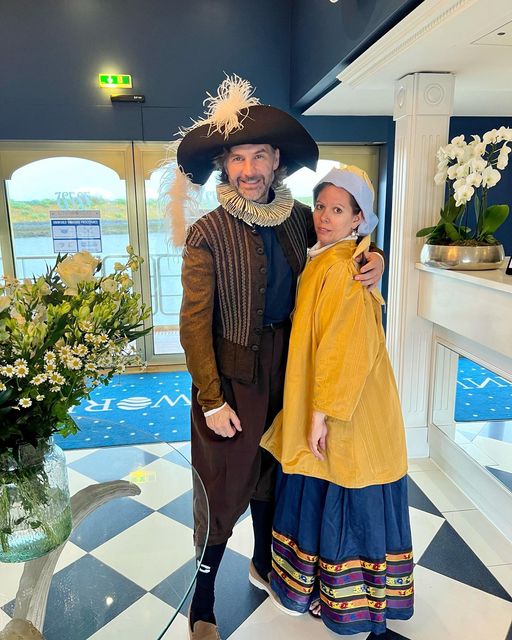
As were leaving the port, we pasted by the Noah’s Ark – see the giraffe on the right side…not sure where it was found, but it seems to be fairly intact.

During the morning sailing, Rik did a presentation on the history of the Netherlands and the various components that make up the country. After lunch, we boarded the coach for a trip into town with a brief stop to sample a local treat – some ‘pancakes’ at Restaurant Oma Toos. These light fluffy pancakes sprinkled with powdered sugar were very tasty and a nice treat.
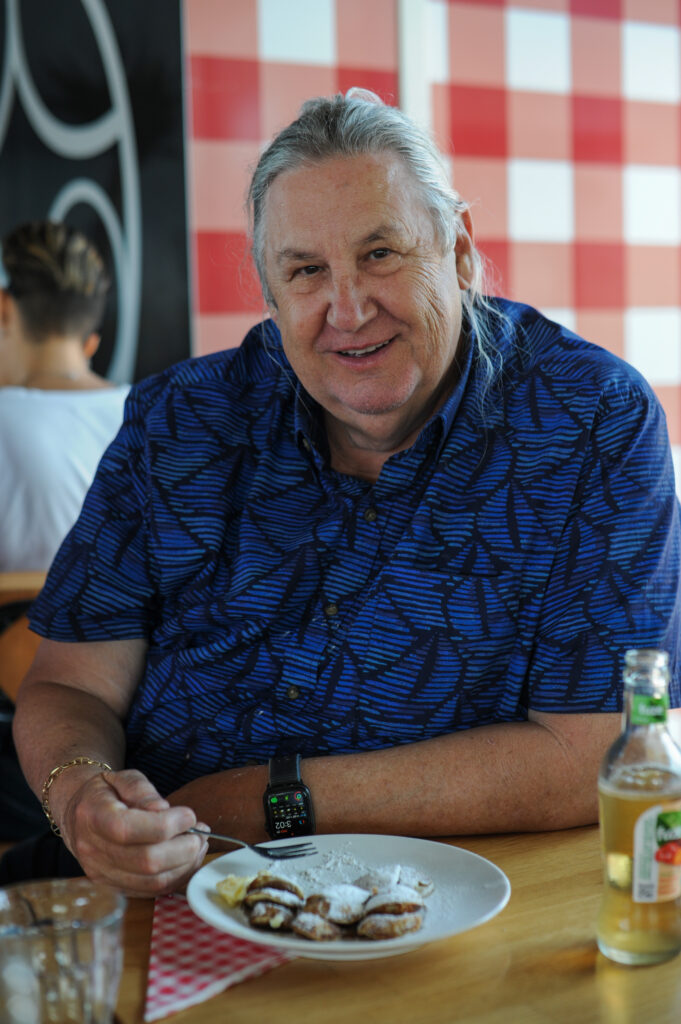
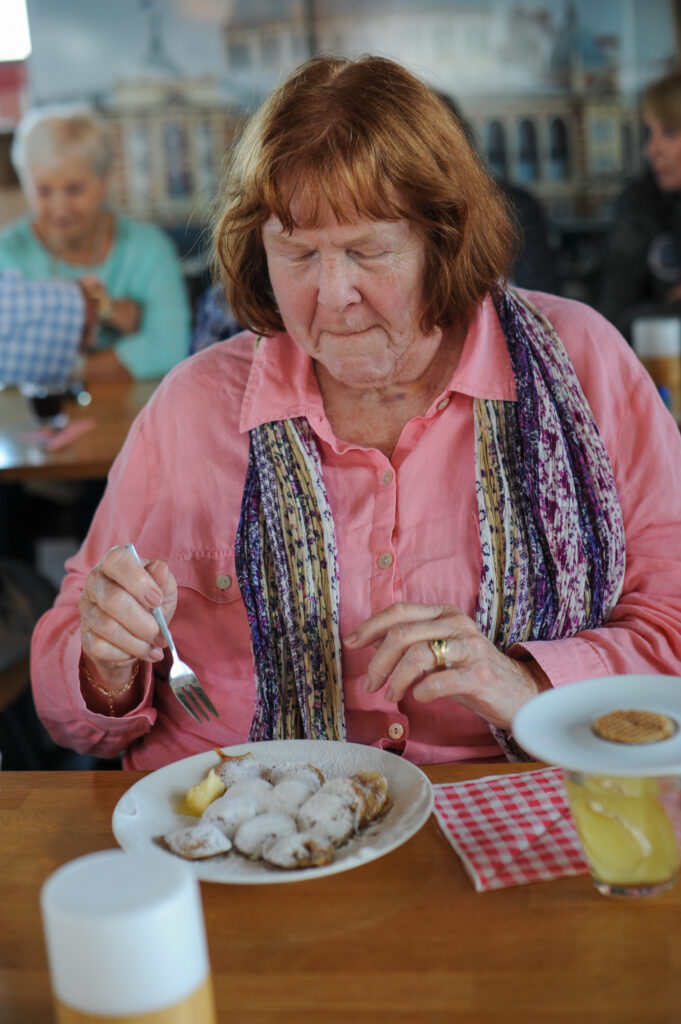

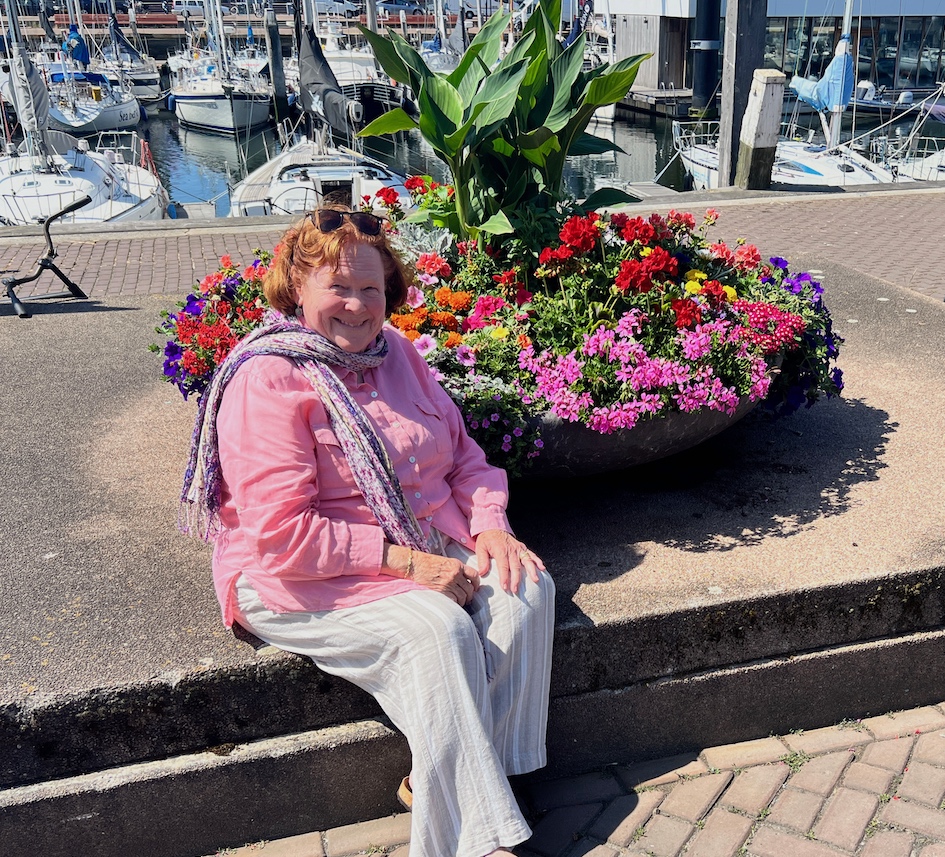
Before going to the museum, there was a short walking tour highlighting some of the area around the museum including a stop at the Peace Palace. One of the most photographed buildings in The Hague and the icon when it comes to peace and justice is the Peace Palace. The donation from Andrew Carnegie from the US resulted in the founding of the Carnegie Foundation in 1`903 and the creation of the Peace Palace.

There was also some interesting street art installations.
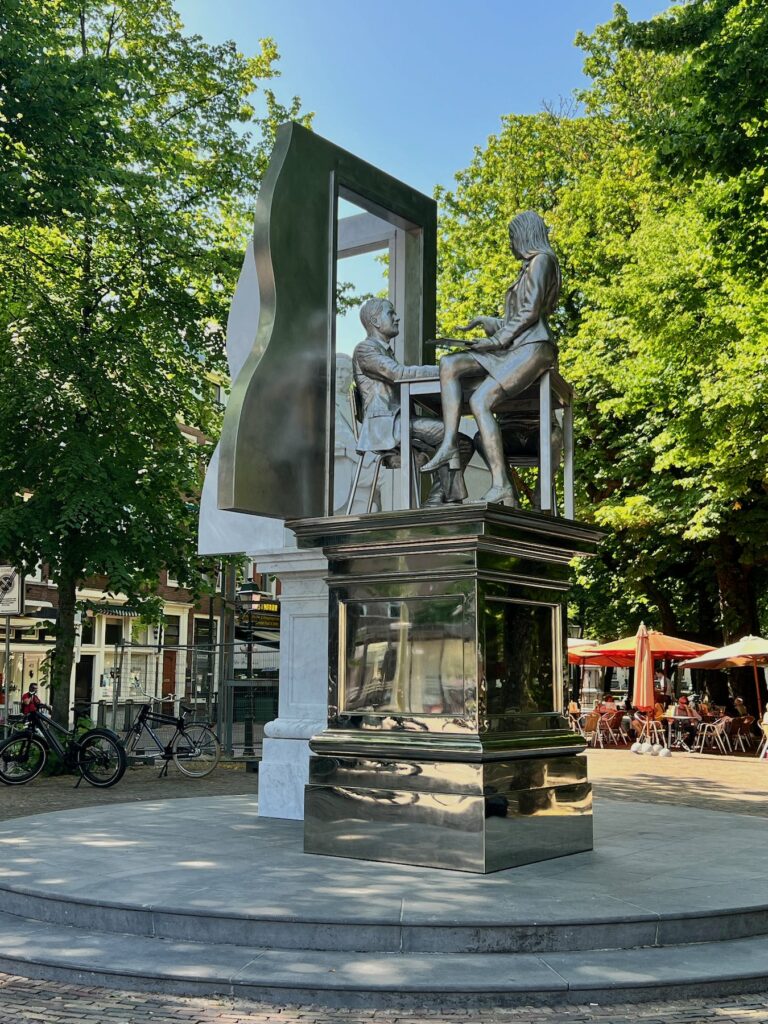

The art museum in The Hague houses the Royal Cabinet of Paintings which consists of over 800 objects – mostly Dutch Golden Age paintings. These include works by Vermeer, Rembrandt, Jan Steen and others. Originally the 17th century building was the residence of count John Maurice of Nassau. It is now the property of the government and is listed in the top 100 Dutch heritage sites.
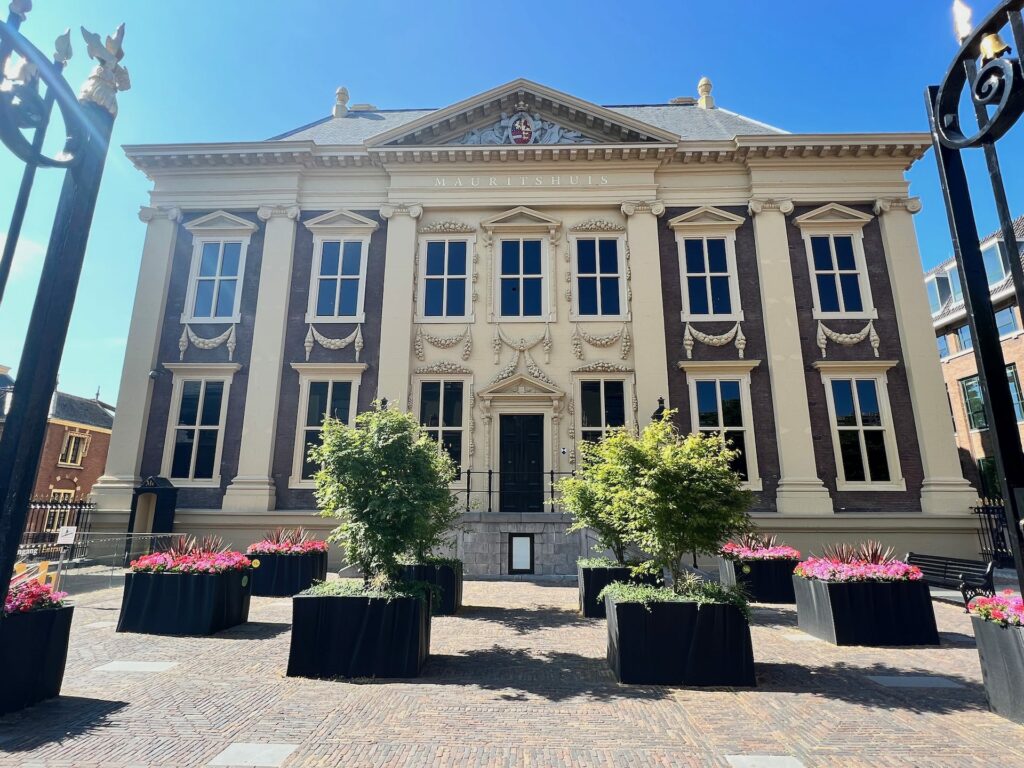
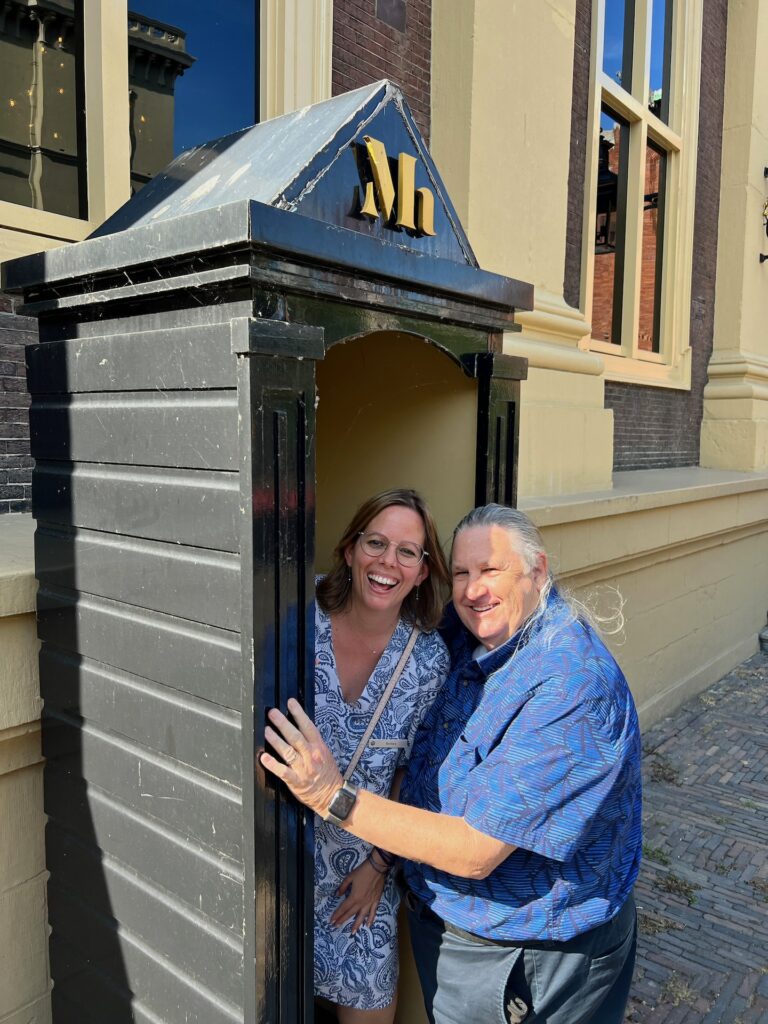
Johannes Vermeer, lived from the early 1630’s until his death in 1675. He created paintings that are among the most beloved and revered images in the history of art. Although only about 36 of his paintings survive, these rare works are among the greatest treasures in the world’s museums. Vermeer began his career in the early 1650’s by painting large-scale biblical and mythological scenes, but most of his later paintings – the ones for which he is most famous – depict scenes of daily life in interior settings. These works are remarkable for their purity of light and form, qualities that convey a serene, timeless sense of dignity. Vermeer also painted cityscapes and allegorical scenes.
Clearly the hightlight of the museum, at least for our group, was The Girl with a Pearl Earring. It is an oil painting on canvas which was completed around 1665. It depicts an imaginary young woman in exotic dress and a very large pearl earring.
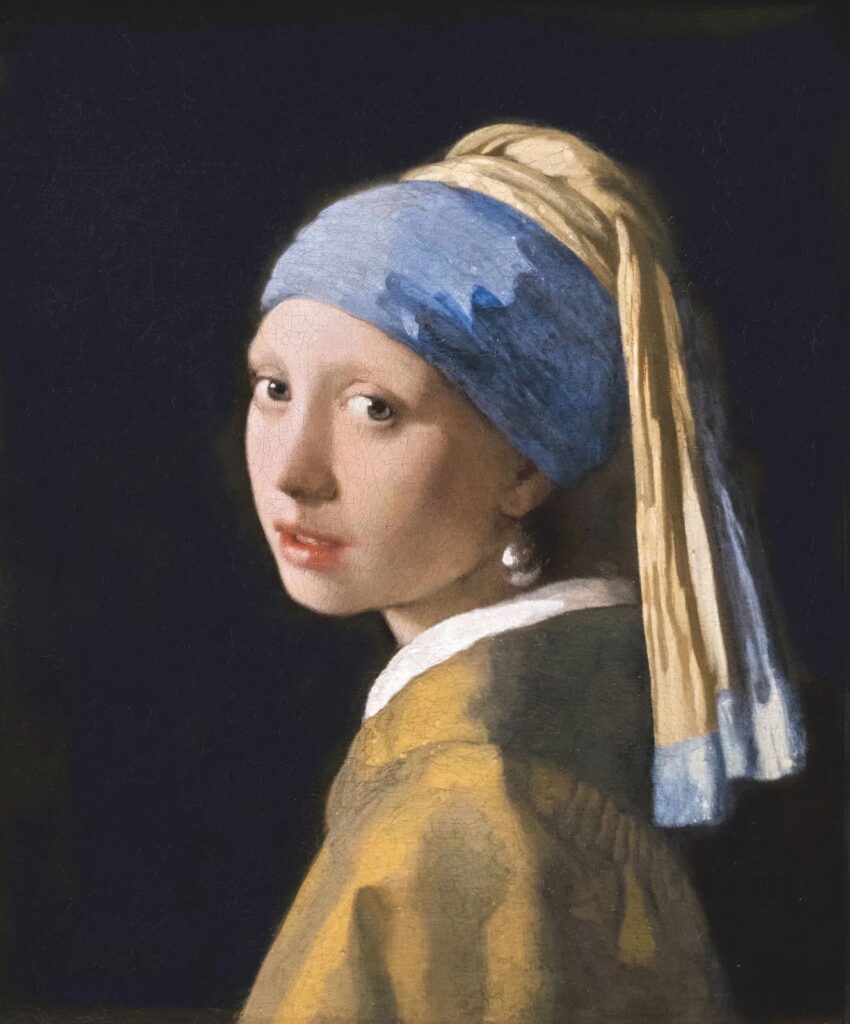
The painting represents a young woman in a dark shallow space, an intimate setting that draws the viewer’s attention exclusively on her. She wears a blue and gold turban, the titular pearl earring, and a gold jacket with a visible white collar beneath. Unlike many of Vermeer’s subjects, she is not concentrating on a daily chore and unaware of her viewer. Instead, caught in a fleeting moment, she turns her head over her shoulder, meeting the viewer’s gaze with her eyes wide and lips parted as if about to speak. Her enigmatic expression coupled with the mystery of her identity has led some to compare her to the equivocal subject in Leonardo da Vinci’s Mona Lisa (c. 1503–19). Unlike the Mona Lisa, however, Girl with a Pearl Earring is not a portrait but a tronie, a Dutch term for a character or type of person.
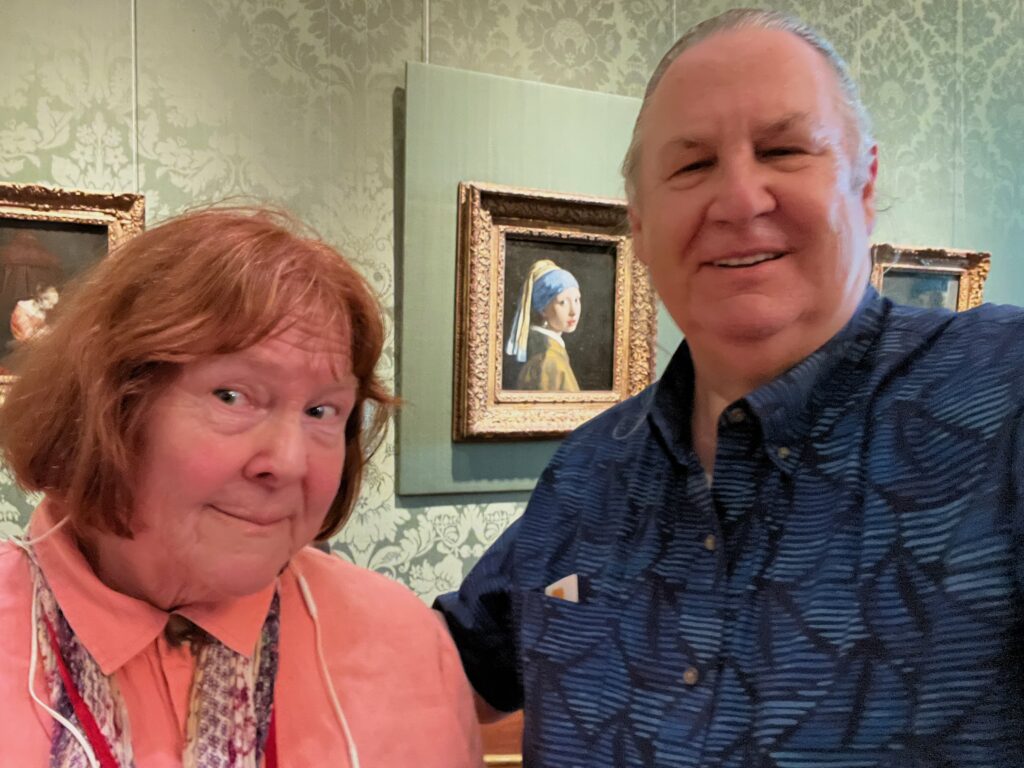
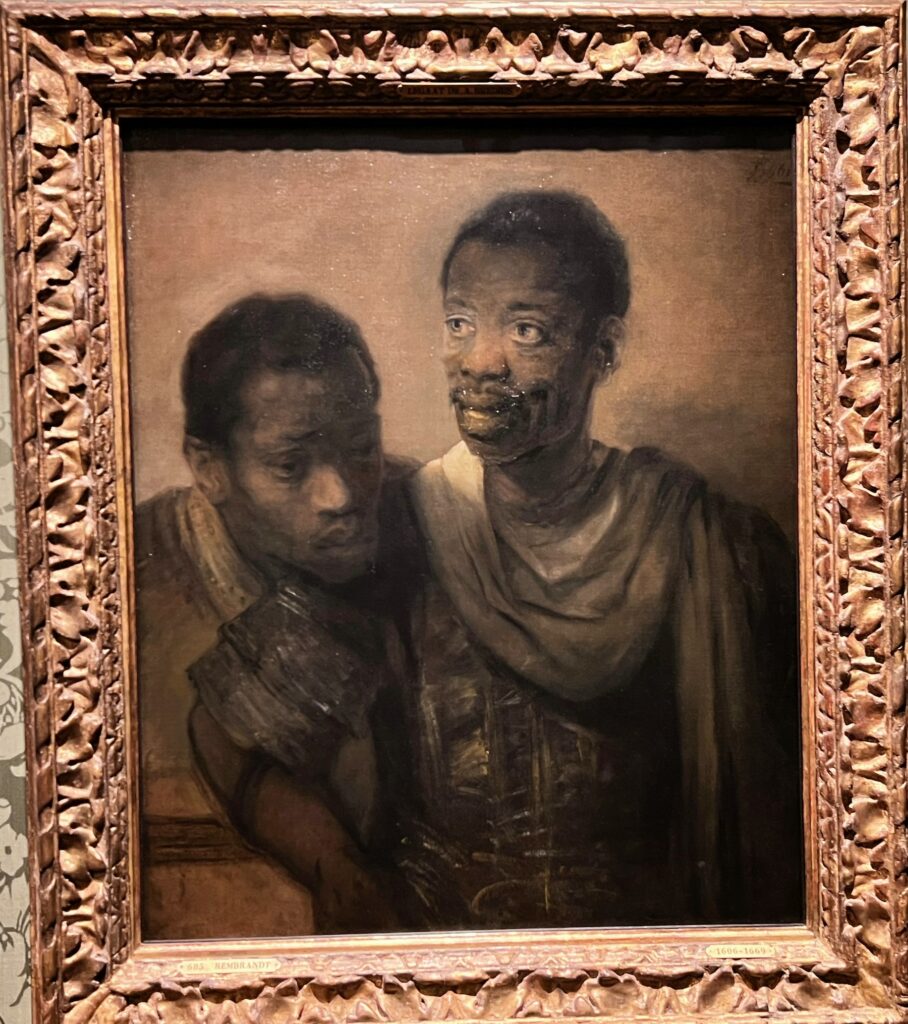

There are a number of very interesting works in the museum including several by Rembrandt including The Anatomy Lesson of Dr. Nicolaes Tulp in 1632, an interesting painting of two African men from 1661 and a self-portrait completed the same year he died in 1669.
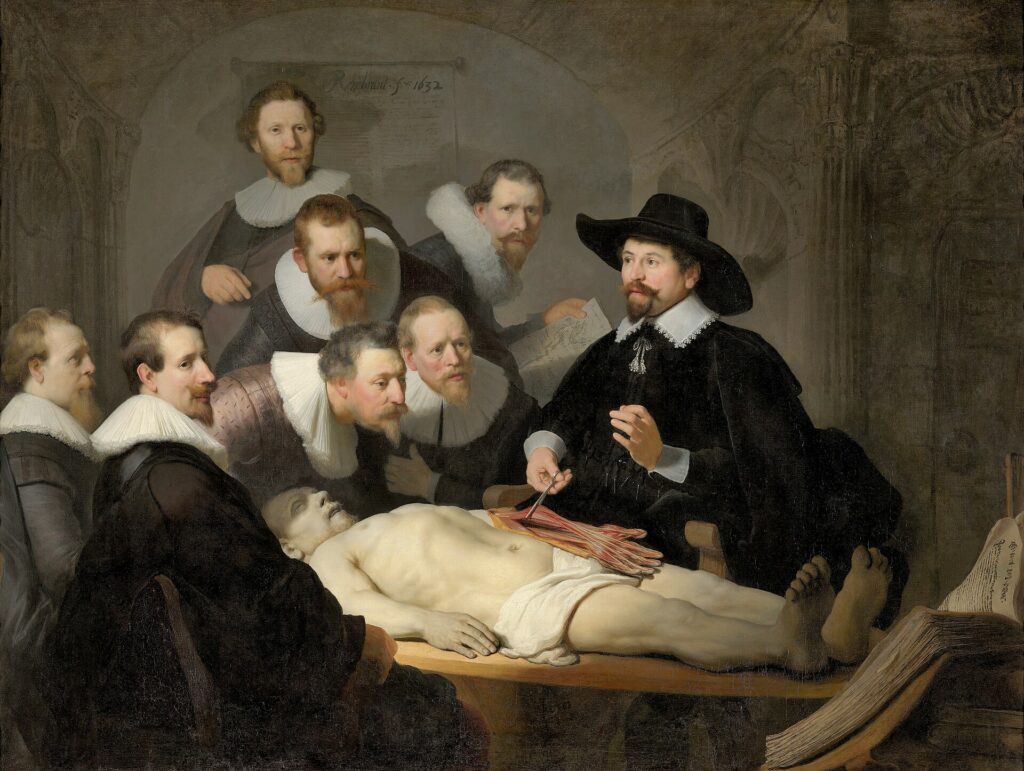
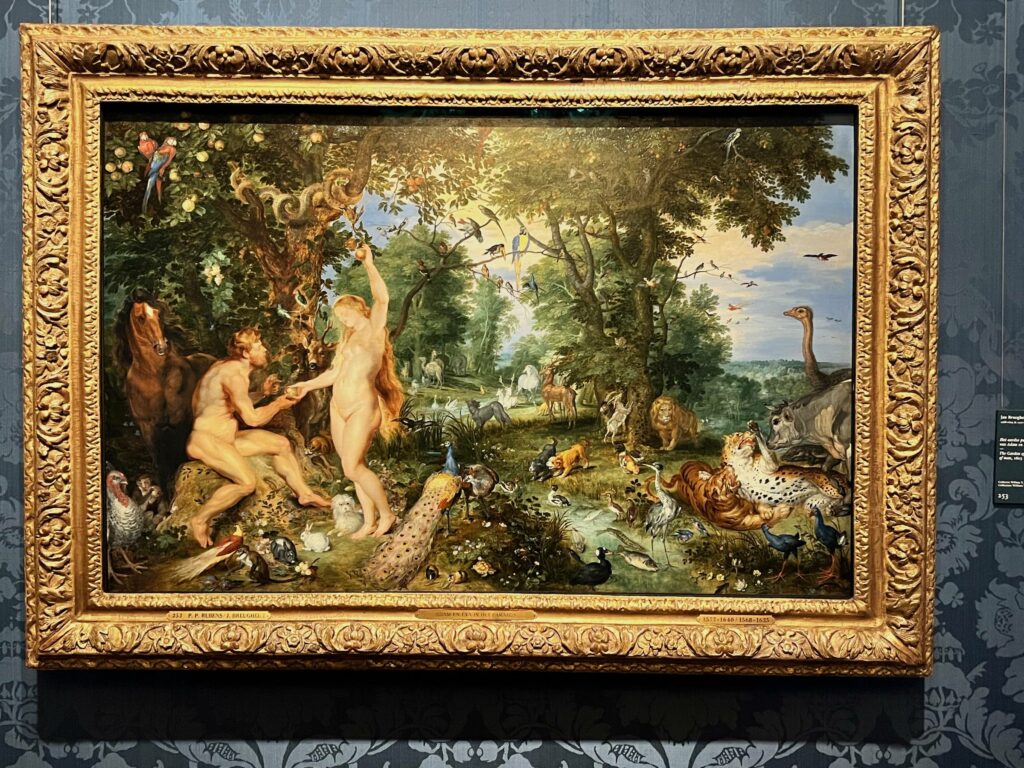
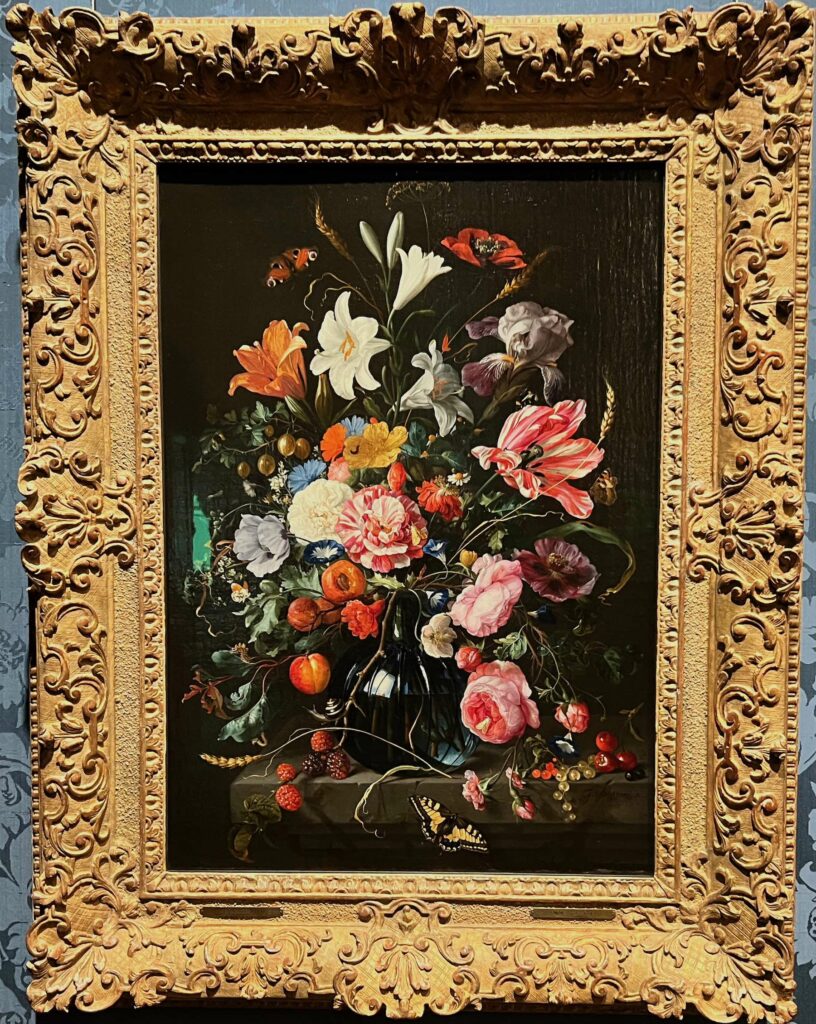
After our visit to the museum, we went back to the boat and relaxed for the evening.